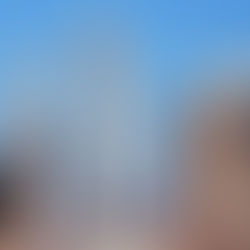Creative destruction performance art by Keyvan Shovir
- Keyvan Shovir

- May 2, 2020
- 3 min read
Updated: Dec 23, 2023

Picture this: Five days before the grand opening of an art exhibition, the curator and artists are in the final throes of preparation. Invitations are sent, advertising is in full swing, and anticipation fills the air. Then, unexpectedly, a ceramic sculpture crashes to the floor, shattering into pieces. A stroke of luck—or perhaps fate, as the artist accidentally smashes their own creation. What ensues is not a catastrophe but a creative metamorphosis.
This scenario paints the best-case outcome of an accident during installation. In the world of art, where precision and perfection often reign, the unexpected becomes a part of the "creative progress."
However, what if the artwork is damaged by someone other than the artist—a preparator, an audience member? The stakes rise, as the preparator may face job loss for dropping a sculpture or leaving fingerprints on a print. It's a delicate dance where every touch must be precise, every movement calculated. Questions about the consequences of accidental damage loom, but answers are elusive.
Art's vulnerability goes beyond physical risks; sometimes, it can even lead to life-altering events. Consider the tragic incident in November 1971, where Richard Serra's "Sculpture No. 3" claimed the life of Raymond Johnson at the Walker Art Center in Minneapolis. The two-ton steel plate toppled over, crushing Johnson. Legal battles ensued, emphasizing the complex responsibilities shared among artists, institutions, and fabricators.
Fast forward to October 1989, and another preparator faced a dire consequence—losing a leg while dismantling a 16-ton Serra sculpture at the Leo Castelli Gallery. The physicality and risks of handling monumental artworks highlight the challenges in the delicate dance of art installation and deconstruction.
Yet, art takes on unpredictable forms, not just in creation but also in intentional destruction. Some artists deliberately dismantle their own works, turning destruction into an act of artistic production. The act of breaking, smashing, or burning an artwork to ashes becomes a powerful expression, challenging conventional notions of preservation and permanence in the art world.

But what if the artwork is damaged by accident, as in a fire that engulfs a museum or gallery? In such cases, it's not a performance art anymore; it's a loss of art. The aftermath involves navigating insurance policies, compensating artists based on coverage, and grappling with the stark reality of irreparable loss.
In the midst of the lockdown, I embarked on a unique performance piece, intentionally ripping apart a painting adorned with Iranian calligraphy and created using mixed media on canvas. This act delves into the impact of language and accent, exploring how these elements can either bridge connections or foster skepticism. The unconventional presentation—hanging the artwork lower than standard height, lacking traditional hanging hardware—defies norms and embraces a rule-free existence.
As the performance unfolds, the residue left behind blurs the lines between the remnants of the painting, scratches on the wall, or the utility knife that met its demise mid-performance. In this transformative act, I harnessed the power of creation through destruction. Yet, this is not the end for the painting. Like energy, art undergoes a metamorphosis, shifting from a physical object to the realm of video and pixels.
Witness the dynamic evolution of artistic expression as the format shifts from a tangible object to the intangible world of video and pixels in this unique video performance by Keyvan Shovir. Watch the performance here.
#PreparatorExcellence #ArtHandlerLife #VideoArtCreation #PerformanceArtistry #ArtInstallationCraft #ArtHandlingPro #CreativeProcess #DestructionInArt #VideoPerformance #ArtisticMetamorphosis #ContemporaryArtCraft #UnconventionalArt #VisualTransformation #GalleryInstallation #DynamicArtExpression #RuleFreeArt #ArtisticEvolution #DigitalArtistry #IntangibleArtForms #ArtBeyondBoundaries #ArtisticAlchemist #PerformanceShift #ArtCreationJourney #VideoCanvasArt #ArtInPixels #MiddleEasternArtist #KeyvanShovir #IranianArtistry #ArtFromTheMiddleEast #CulturalExpression #MiddleEasternCreativity #ContemporaryMiddleEasternArt


























Grateful for sharinng this